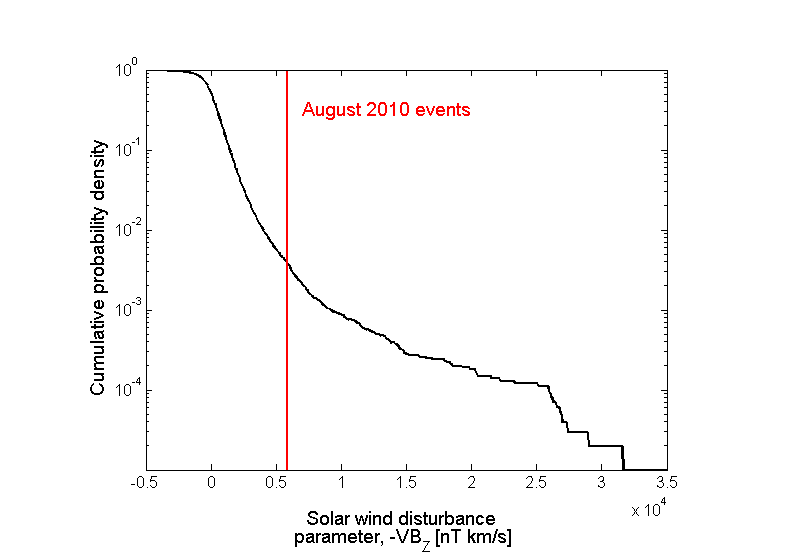Wednesday (4th August 2010) night, sky-watchers as far south as Denmark and northern Germany were treated to a glimpse of the aurora – unfortunately it didn’t extend far enough to be lost in the bright lights of Reading. This geomagnetic activity was the result of a pair of solar eruptions on August 1st, recorded in detail by the new Solar Dynamics Observatory (there’s a stunning movie here. One ejection can be seen as the erupting dark material to the north of disc centre, while the other originated in the bright flaring region just left of disc centre). The ejecta were subsequently tracked out into the solar wind, ultimately to Earth, by the twin STEREO spacecraft.
Space weather prediction
Based even on early observations, forecasters were confident the ejecta were headed towards Earth and via ballistic extrapolation of the initial speed, made reasonably accurate estimates of their arrival at Earth (though with uncertainties of order +/- 1 day, i.e., +/- 30% of the travel time). Lacking, however, were quantitative physics-based predictions of the impact on the Earth’s system, in particular intensity, location or timing of aurora. If we know a “storm front” is on its way, we can measure its speed and know it will be travelling almost entirely radially from the Sun, why is space weather forecasting so difficult?
Quite a number of reasons, it turns out. In situ coverage of interplanetary space is sparse at best: The sheer volume means events can only be monitored at one, maybe two, points, and orbital dynamics mean never at the locations optimum for forecasting. Advanced prediction is therefore based on remote observations of the solar wind, which are limited to hydrodynamic properties, notably plasma density. Solar wind disruption of the Earth’s magnetic field, however, is primarily governed by electromagnetic properties, in particular the strength and orientation of the magnetic field. Presently, the only routine way to measure the solar wind magnetic field is with spacecraft in near-Earth space, giving at most ~30 minutes warning.
The recent events in context

Although the geoeffectiveness of these recent eruptions was difficult to forecast, it’s useful to look at them in retrospect. The solar wind speed, V, and its magnetic field strength in opposition to that of the Earth, -BZ, determines the rate at which energy is injected into the terrestrial system. The figure above compares the hourly occurrence of the solar wind “driving parameter,” -VBZ, over the last solar cycle to the values observed in these recent events. Clearly, events of this magnitude are fairly common over the course of a typical solar cycle (though enhanced hourly -VBZ values are highly clustered in time). So why was there such widespread media interest? The significance of these aurora is their timing – after nearly half a decade of anomalously quiet solar activity, they are a reminder that the Sun is finally starting a new cycle.
My prediction for aurora over Reading: 2012. Give or take a year.